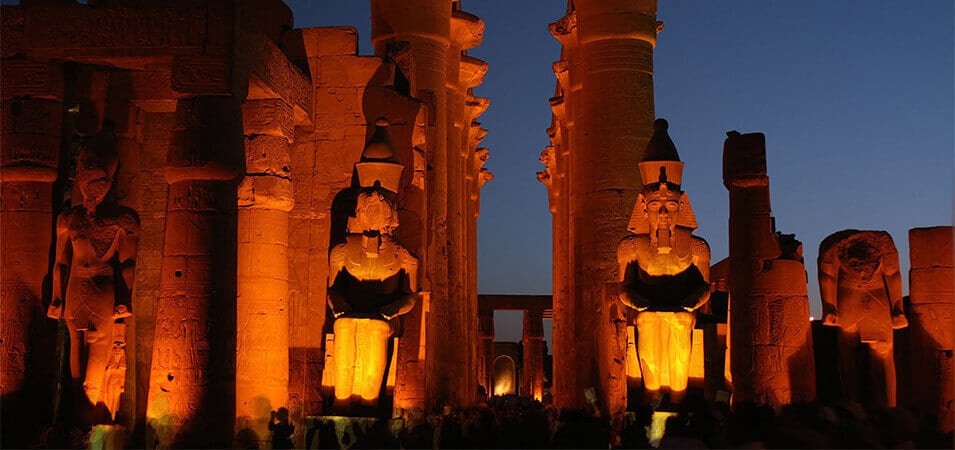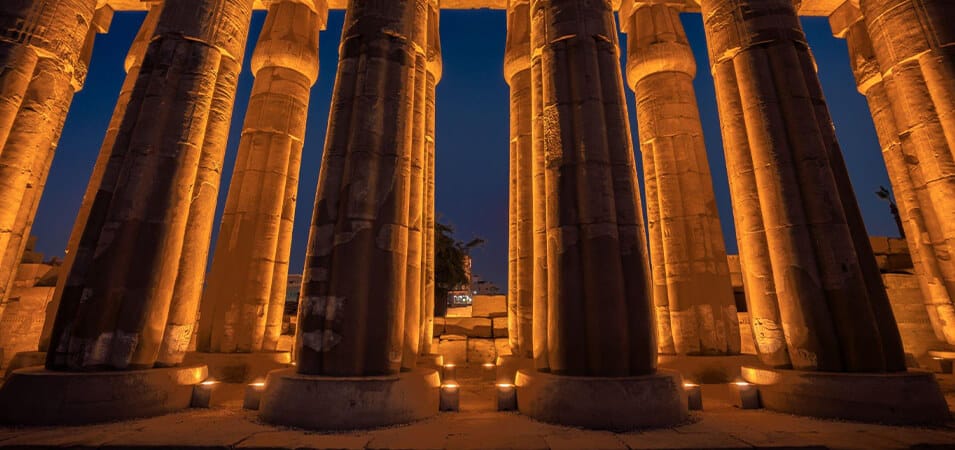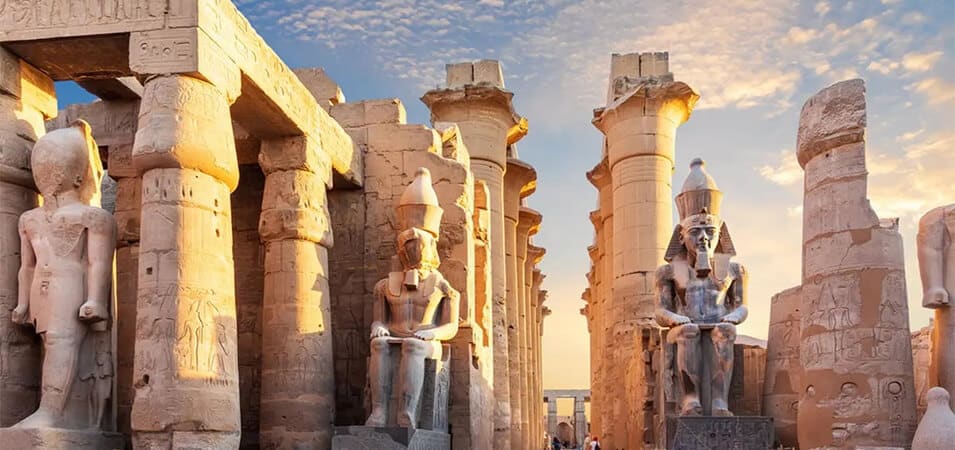Welcome to the beautiful Luxor Temple, a great example of ancient Egypt’s greatness. Luxor Temple is a fascinating and historically significant old Egyptian temple complex. It is in the middle of Luxor City in Egypt. Luxor Temple was built in the New Kingdom about 3,400 years ago. It is one of the country’s best-preserved and most impressive holy buildings.
The Luxor Temple, also known as the “Southern Sanctuary,” is an old Egyptian temple where religious ceremonies and worship occur. It was made for the gods Amun, Mut, and Khonsu, known as the Theban Triad. For this reason, the temple complex covered a large area and was placed on the east bank of the Nile River, opposite the Karnak Temple complex.
It is a famous place for tourists and history buffs worldwide to visit because of its size, beauty, and cultural significance. In this article, we’ll learn about Luxor Temple’s long past, how it was built, and what it represents. In this piece, we’ll look at the fascinating details of the Luxor Temple, including its history, architecture, and cultural significance.
Don’t Miss checking out our Egypt Tour Packages.
Historical Significance

- It has a vast amount of historical importance. It was built during the time of the New Kingdom, about 3,400 years ago, and is a significant part of ancient Egyptian history.
- The temple was built by different pharaohs, such as Amenhotep III, Tutankhamun, and Ramses II. Each pharaoh helped build, expand, or fix up the temple somehow. The Theban Triad, made up of the gods Amun, Mut, and Khonsu, had a place of worship and ceremony at Luxor Temple.
- The ancient Egyptians considered it a holy place, imperative to their religion. During its existence, the Luxor Temple saw many essential functions and events. It was where the pharaohs and priests held holy celebrations, processions, and ceremonies. These rituals aimed to make the gods happy, get their blessings, and ensure the kingdom’s prosperity and safety.
- The ancient Egyptian culture is also important to the history of the Luxor Temple. It was strategically placed on the east bank of the Nile River, facing the Karnak Temple complex, another important religious spot. The alignment and closeness of these two buildings showed that the earthly and divine worlds were connected. This showed that the ancient Egyptians believed that the mortal and immortal worlds were balanced.
Architecture and Layout of Luxor Temple
- The design and construction of it are truly unique. The temple complex stands out for how grand and well-made it is. It has vast pylons, tall columns, reliefs, and hieroglyphics that are carefully carved. The temple comprises many different buildings, such as the main shrine, the court of Ramses II, and the room where Amenhotep III was born.
- The symmetry and accuracy of the building’s parts show how well the ancient Egyptians understood geometry and how much they wanted to make beautiful and impressive buildings. Visitors are still amazed by the beauty of Luxor Temple’s design, which gives them a taste of how skilled people were in the past.
The Great Colonnade
- The Great Colonnade is one of the most impressive parts of Egypt’s Luxor Temple. This beautiful road has huge statues and tall columns, giving it a grand and powerful feel. The sculptures, which mostly show the pharaoh Ramses II, are sitting and give off an air of divine power.
- The size and detail of the figures show how good the ancient Egyptians were at sculpture and how well they were able to show the power and presence of the pharaoh. Walking along the Great Colonnade is a fascinating experience that lets people feel like they are in ancient Egypt and see how brilliant the architecture was back then.

Obelisks and Statues
- The design of Luxor Temple is mainly made up of obelisks and statues. In ancient Egyptian society, these fantastic structures served as decorations and had many religious and symbolic meanings. The obelisks were made from single blocks of basalt.
- They were made to look like the sun god Ra and were thought to help people in the human world talk to the gods. Huge statues, which often show pharaohs like Ramses II, show that the kings were gods and would always be in the temple. The impressive obelisks and statues at Luxor Temple add to its grandeur and awe, making tourists feel like they are in the ancient Egypt of long ago.
Luxor Temple at Night
This fantastic Temple at night has a magical air that draws people in. The building goes through a fascinating change as the sun goes down and night falls. The beautiful structures of the temple are bathed in a soft, warm light that shows off their detailed carvings and grand architecture. The play of light and shade gives the room a mysterious feel, making it feel like a place from another time. The old walls come to life and tell stories of times gone by. Going to it at night is a unique and magical experience that lets people see the temple’s timeless beauty in a new way.
Symbolism and Religious Practices
Luxor Temple was more than just a place of worship. It had a lot of meaning and was where people went to pray. It was a link between humans and gods, where people honored the gods with elaborate rites and ceremonies. To respect the gods and ask for their help, elaborate rituals, ceremonies, and gifts were done. The temple’s design and hieroglyphic writing sent spiritual messages and showed how the ancient Egyptians thought about the future, gods, and the order of the universe.

FAQs to Luxor Temple
How old is it?
It was built approximately 3,400 years ago during the New Kingdom period.
What gods were worshipped at Luxor Temple?
The temple was dedicated to the Theban Triad, consisting of the gods Amun, Mut, and Khonsu.
Can visitors enter Luxor Temple at night?
It is open for nighttime visits, offering a unique and captivating experience.
How long does it take to explore Luxor Temple?
The duration of a visit to Luxor Temple can vary, but most visitors spend around 1-2 hours exploring the complex.
Are there any nearby attractions worth visiting?
Luxor Temple is near other significant attractions, including the Karnak Temple complex and the Valley of the Kings.
Conclusion
The ancient Egyptians were very creative and good at art, and Luxor Temple is proof of that. Its timeless beauty and historical importance make it a must-see place for anyone who wants to learn more about Egypt’s rich cultural history. A visit to Luxor Temple is a once-in-a-lifetime event that takes people back and shows them the beauty of one of Egypt’s most famous landmarks. When you go to Luxor Temple, it’s like going back in time, whether walking through the temple’s rooms during the day or taking in its mysterious atmosphere at night.
Don’t Miss checking out our Related Article :
